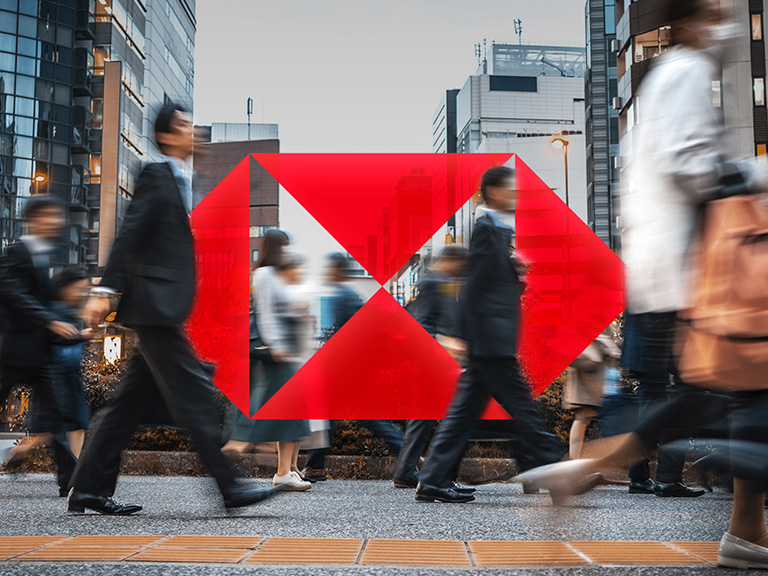HSBC in Mauritius
Our services
Over the past two decades, HSBC Bank (Mauritius) Limited has achieved significant success in fund management and cross-border lending. As part of one of the largest global banking networks, HSBC in Mauritius leverages its extensive international reach to serve customers locally and globally, facilitating connections to various opportunities. A remarkable 90 per cent of its business is inbound, underscoring its commitment and dedication to excellence in service and strategic growth.
HSBC Bank (Mauritius) Limited offers a range of global banking services, including corporate banking with tailored solutions for funding needs in both local and foreign currencies. It plays a pivotal role in the Mauritius Global Business sector, having established one of the first Offshore Banking Units in 1991. HSBC provides comprehensive trade services and financial facilities, particularly benefiting Freeport and global business companies operating out of Mauritius.
For global investors, HSBC offers an array of financial products, such as multi-currency accounts and deposits, foreign exchange and treasury services, and efficient funds transfer options like HSBCnet with Face ID recognition. Additionally, HSBC provides e-banking and instant payments, trade finance, multi-currency corporate lending, global custody services, green finance, and escrow accounts. The bank is committed to being a leading choice for innovative sustainable finance solutions and actively supports its customers in their transition to net zero, aligned with HSBC’s broader environmental ambitions.
Our headquarters
HSBC Center, ICON Ebene
Level 5, Office 1 (West Wing)
Rue de L’Institut
72202, Ebene
Telephone: +(230) 403 8333
Our CEO
Hajrah Sakauloo
CEO and Head of Banking
Our history in Mauritius
The history of the HSBC Group in Mauritius begins in 1859, when the Chartered Mercantile Bank of India, London, and China (the forerunner of the Mercantile Bank Ltd) established a branch in Port Louis. The bank helped to finance the construction of the Port Louis to Curepipe railway network in 1864.
In 1865, the Chartered Mercantile Bank decided to close the branch owing to difficult business conditions in India. For the next half century Chartered Mercantile Bank was represented in Mauritius by the Blyth Brothers and Co Ltd, which today trades as Ireland Blyth Ltd, IBL.
In 1892, the Chartered Mercantile Bank was renamed The Mercantile Bank of India Limited and in 1916 it bought the Bank of Mauritius, then a commercial bank. The Mercantile Bank of India Ltd acquired not only the business of the old Bank of Mauritius, but also its historic building in Place d’Armes. The name was changed to Mercantile Bank Ltd, and the Bank conducted business from its main office at Place d’Armes from 1916 to 1983.
In 1959 the Mercantile Bank was bought by The Hongkong and Shanghai Banking Corporation Limited and in 1983 the name of the Group’s operations in Mauritius was changed from the Mercantile Bank Ltd to Hongkong Bank. In 1999, the international brand name HSBC was established, and we are now known in Mauritius, as we are elsewhere, simply as HSBC.
HSBC’s future strategy
Discover our new repositioning strategy, crafted to align with shifting market dynamics. We’re emphasizing innovation, strengthening customer connections, and staying ahead of trends to drive growth. This is how we are forging a path towards a more sustainable and dynamic future.

HSBC metro wrapping
Introducing the LRT Wrapping Branding Campaign. We are the first in the ASP region to go for this bold move. This initiative showcases our commitment to sustainability, using trains as moving canvases to enhance our brand presence and promote environmental awareness.

- Download Board of Directors HSBC Bank (Mauritius) Limited English PDF 352.83 KB
- Download Risk Management Committee Core Terms of Reference English PDF 3.33 MB
- Download HSBC Bank (Mauritius) Limited Board Terms of Reference English PDF 3.21 MB
- Download Constitution of HSBC Bank (Mauritius) Limited English PDF 406.67 KB
- Download Position Statements of HSBC Bank (Mauritius) Limited English PDF 514.46 KB
- Download Appointments Process of HSBC Bank (Mauritius) Limited English PDF 500.88 KB
- Download Statement of Accountabilities of HSBC Bank (Mauritius) Limited English PDF 491.73 KB
- Download HSBC Code of Conduct English PDF 10.13 MB
- Download Audit Committee Core Terms of Reference HSBC Bank (Mauritius) Limited English PDF 3.34 MB
- Download Management Team profiles English PDF 1.09 MB
- Download HSBC Code of Conduct English PDF 10.13 MB
- Download HSBC Bank (Mauritius) Limited - Net Stable Funding Ratio (NSFR) - 30 June 2025 English PDF 303.14 KB
- Download HSBC Bank (Mauritius) Limited - Net Stable Funding Ratio (NSFR) - 31 March 2025 English PDF 289.21 KB
2024
- Download HSBC Bank (Mauritius) Limited - Annual Report 2024 English PDF 1.69 MB
- Download HSBC Bank (Mauritius) Limited - Net Stable Funding Ratio (NSFR) - 30 June 2024 English PDF 813.30 KB
2023
- Download HSBC Bank (Mauritius) Limited - Annual Report 2023 English PDF 8.68 MB
2022
- Download HSBC Bank (Mauritius) Limited - Annual Report 2022 English PDF 7.56 MB
- Download HSBC Bank (Mauritius) Limited - Liquidity Coverage Ratio - March 2022 English PDF 14.74 KB
2021
- Download HSBC Bank (Mauritius) Limited - Annual Report 2021 English PDF 5.11 MB
- Download HSBC Bank (Mauritius) Limited - Liquidity Coverage Ratio - December 2021 English PDF 676.47 KB
- Download HSBC Bank (Mauritius) Limited - Liquidity Coverage Ratio - September 2021 English PDF 19.23 KB
- Download HSBC Bank (Mauritius) Limited - Liquidity Coverage Ratio - June 2021 English PDF 189.01 KB
- Download HSBC Bank (Mauritius) Limited - Liquidity Coverage Ratio - March 2021 English PDF 198.66 KB
2020
- Download HSBC Bank (Mauritius) Limited - Annual Report 2020 English PDF 6.53 MB
- Download HSBC Bank (Mauritius) Limited - Liquidity Coverage Ratio - December 2020 English PDF 17.95 KB
- Download HSBC Bank (Mauritius) Limited - Liquidity Coverage Ratio - September 2020 English PDF 17.31 KB
- Download HSBC Bank (Mauritius) Limited - Liquidity Coverage Ratio - June 2020 English PDF 13.99 KB
- Download HSBC Bank (Mauritius) Limited - Liquidity Coverage Ratio - March 2020 English PDF 17.72 KB
2019
- Download HSBC Bank (Mauritius) Limited Annual Report 2019 English PDF 2.25 MB
- Download HSBC Bank (Mauritius) Limited - Liquidity Coverage Ratio - December 2019 English PDF 13.49 KB
- Download HSBC Bank (Mauritius) Limited - Liquidity Coverage Ratio - September 2019 English PDF 13.34 KB
- Download HSBC Bank (Mauritius) Limited - Liquidity Coverage Ratio - June 2019 English PDF 13.51 KB
- Download HSBC Bank (Mauritius) Limited- Liquidity Coverage Ratio - March 2019 English PDF 13.13 KB
2018
- Download HSBC Bank (Mauritius) Limited Annual Report 2018 English PDF 11.26 MB
- Download HSBC Bank (Mauritius) Limited - Liquidity Coverage Ratio - December 2018 English PDF 13.91 KB
- Download HSBC Bank (Mauritius) Limited - Liquidity Coverage Ratio - September 2018 English PDF 14.17 KB
- Download HSBC Bank (Mauritius) Limited - Liquidity Coverage Ratio - June 2018 English PDF 14.10 KB
- Download HSBC Bank (Mauritius) Limited - Liquidity Coverage Ratio - March 2018 English PDF 37.70 KB
2017
- Download HSBC Bank (Mauritius) Limited - Financial Statement - December 2017 English PDF 85.25 KB
- Download HSBC Bank (Mauritius) Limited - Liquidity Coverage Ratio - December 2017 English PDF 37.62 KB
2016
- Download HSBC Bank (Mauritius) Limited - Audited Annual Report - December 2016 English PDF 132.60 KB
2015
- Download HSBC Bank (Mauritius) Limited - Financial Statement - December 2015 English PDF 97.26 KB
2014
- Download HSBC Bank (Mauritius) Limited - Financial Statement - December 2014 English PDF 540.14 KB
2013
- Download HSBC Bank (Mauritius) Limited - Financial Statement - December 2013 English PDF 817.52 KB
2012
- Download HSBC Bank (Mauritius) Limited - Financial Statement - December 2012 English PDF 318.81 KB
2025
2024
2023
2022
2021
2020
2019
2018
2017
2016
2015
2014
2013
2012
ESG contact
For any queries regarding our environmental, social and corporate governance approach, please email rumila.thummanah@hsbc.co.mu, our Business Sustainability lead in Mauritius.
HSBC Group history timeline

It’s difficult to define the value of art Opens in new window
The urge to collect art is driven by very different desires to those behind building a stock or bond portfolio, says Russell Prior.

Making alternatives accessible matters Opens in new window
The democratisation of alternative investments is positive as it will open up opportunities for private wealth investors, says William Benjamin.

New investment solutions needed to finance electricity grids Opens in new window
New investment solutions are needed to upgrade and expand electricity grids at the rate required – for both energy security and the global energy transition, says Randolph Brazier.











